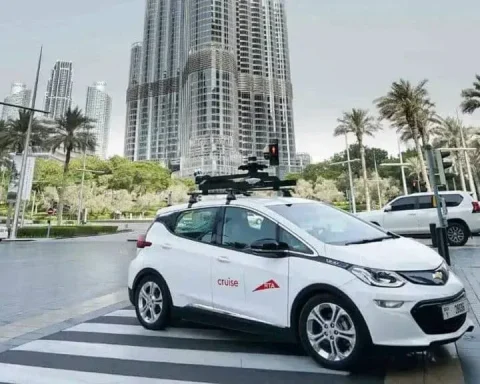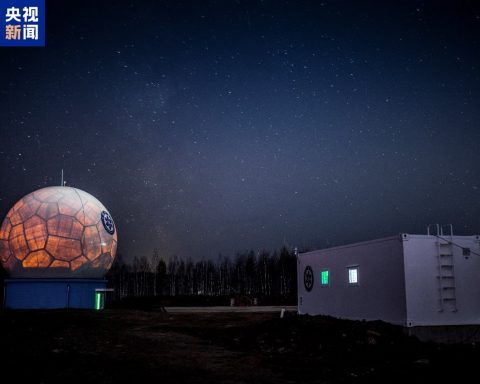As we enter the closing months of 2024, Virtual Reality (VR) is no longer a futuristic dream—it has become an integral part of various sectors, influencing everything from entertainment and education to healthcare and retail. VR’s evolution has set the stage for transformative trends that promise to redefine how we work, play, and interact with the world. In this report, we explore 23 VR trends shaping the landscape of 2024 and beyond.
In the corporate world, VR is revolutionizing employee training and development. Companies like Walmart and Verizon leverage VR simulations to prepare their workforce for challenging scenarios, from handling customer conflicts to managing crises. The immersive nature of VR allows employees to engage in experiential learning in a safe environment, which is far more effective than traditional training methods. John Smith, Head of Training at Walmart, emphasizes that “VR provides a safe environment to practice and learn. It’s not just about theory anymore; it’s about experiential learning.”
This trend is expected to grow as more companies recognize the cost-effectiveness and efficiency of VR training. Organizations can enhance employee performance and retention by replicating real-world scenarios in a controlled virtual environment. As the technology becomes more accessible, VR training could become a standard in various industries, from retail to healthcare.
Education is undergoing a significant transformation with the integration of VR, offering students immersive experiences that traditional methods cannot match. Institutions like Stanford University are incorporating VR into their curricula, enabling students to explore everything from ancient civilizations to complex medical procedures in a 3D environment. An education technology expert, Dr. Alice Cheng, points out that “VR breaks down the barriers of traditional learning. It transforms abstract concepts into tangible experiences.”
As VR technology becomes more widespread, its impact on education will continue to grow. By providing interactive and immersive learning experiences, VR is expected to play a crucial role in enhancing educational outcomes. It allows students to engage with content in an engaging and memorable way, setting a new standard for learning in the digital age.
The healthcare sector is experiencing a profound impact from VR, particularly in areas such as pain management, physical therapy, and mental health treatment. VR is being used to distract patients during painful procedures, simulate surgeries for training purposes, and even treat conditions like PTSD. Dr. Anthony Russell, a surgeon at Johns Hopkins, notes that “VR is not just a tool for entertainment; it’s a crucial technology in modern medicine.”
As VR technology advances, its healthcare applications are expected to expand. By offering immersive and interactive experiences, VR can improve patient outcomes and enhance the quality of care. From rehabilitation programs to mental health therapies, VR is set to become an essential tool in the medical field.
Retailers are increasingly adopting VR to enhance the shopping experience, offering virtual showrooms where customers can try on clothes or visualize furniture in their homes. This technology merges the online and offline shopping experiences, providing a new level of interactivity and personalization. Laura Bennett, CEO of a leading e-commerce platform, explains that “VR brings a new level of interactivity and personalization to retail.”
As VR technology improves, its role in retail is expected to grow, transforming how consumers shop. By offering immersive shopping experiences, VR can drive customer engagement and satisfaction, leading to higher sales and brand loyalty. The future of retail lies in the seamless integration of VR technology, creating a more engaging and personalized shopping experience.
The hardware behind VR is rapidly evolving, making the technology more accessible to consumers. The release of lighter, more affordable headsets is breaking down barriers to entry, allowing more people to experience VR. A tech analyst, Mark Thompson, notes that “the hardware is catching up with the software. We’re seeing significant improvements in resolution, comfort, and overall user experience.”
These advancements in VR hardware are critical to the technology’s widespread adoption. As headsets become more comfortable and affordable, VR will become a staple in everyday life, from gaming and entertainment to education and healthcare. The continuous improvement in hardware will ensure that VR remains at the forefront of technological innovation.
Social interactions in virtual environments are becoming increasingly common as platforms like VRChat and Facebook’s Horizon Worlds gain popularity. These platforms allow users to meet, socialize, and collaborate in virtual spaces, bridging the gap between physical and digital interactions. Social media strategist Sarah Mitchell believes that “social VR is bridging the gap between physical and virtual worlds. It’s where the future of social interaction lies.”
As more people turn to social VR platforms for interaction, how we connect with others will likely change dramatically. Virtual environments offer a unique opportunity for socialization, allowing users to interact in ways that are not possible in the physical world. This trend is expected to grow, with social VR becoming a vital component of the digital landscape.
The real estate industry is leveraging VR to offer virtual tours of properties, allowing potential buyers to explore homes from anywhere in the world. This technology provides a comprehensive view of properties, saving time and money for both buyers and sellers. Jake Brown, a leading realtor, says, “VR has revolutionized real estate. It saves time and money for both the buyer and the seller by offering a comprehensive view of the property.”
As VR becomes more integrated into the real estate industry, it is expected to become a standard tool for property viewing. By offering immersive and interactive experiences, VR can enhance home buying, making it more efficient and accessible. The future of real estate lies in the seamless integration of VR technology, transforming how properties are bought and sold.
The rise of remote work has accelerated the adoption of VR workspaces, where employees can collaborate in a virtual office environment. Companies like Spatial and VirBELA are leading the way in creating these immersive workspaces, providing the benefits of physical presence without the need to commute. A remote work consultant, Emily Carter, states that “VR is the next step in the evolution of remote work. It provides the benefits of physical presence without the need to commute.”
Over time, VR workspaces are expected to become a key component of the modern workplace. By offering immersive and interactive environments, VR can enhance collaboration and productivity, making remote work more effective and efficient. The future of work lies in the seamless integration of VR technology, creating a more connected and collaborative workplace.
The entertainment industry embraces VR for storytelling, offering viewers a more immersive experience. Films, concerts, and even theater performances are being adapted for VR, allowing audiences to engage with content in new and exciting ways. Michael Bay, a renowned film director, notes, “VR allows us to tell stories in ways we never could before. It’s a new frontier for creativity.”
Virtual reality’s impact on storytelling and entertainment is expected to grow. By offering immersive and interactive experiences, VR can transform how we consume content, creating new opportunities for creativity and engagement. The future of entertainment lies in the seamless integration of VR technology, offering audiences a more immersive and interactive experience.
Esports is entering the VR space, with games like Echo VR and VRChat becoming competitive arenas. VR adds a physical element to esports that traditional gaming lacks, offering a new level of immersion and competition. James Kelly, a professional VR gamer, states, “VR adds a physical element to esports that traditional gaming lacks. It’s a whole new level of immersion and competition.”
As VR grows in popularity, its role in esports is expected to expand. By offering immersive and interactive experiences, VR can create new opportunities for competitive gaming and attract a new generation of gamers. The future of esports lies in the seamless integration of VR technology, offering a more immersive and engaging experience for players and spectators alike.
The fitness industry is embracing VR with applications that combine exercise and entertainment. Platforms like Supernatural and FitXR are turning workouts into immersive experiences, making exercise more engaging and enjoyable. A fitness expert, Samantha Blake, believes that “VR fitness is not just a trend; it’s the future of exercise. It’s engaging, effective, and fun.”
VR’s impact on fitness and wellness is expected to grow. By offering immersive and interactive experiences, VR can transform how we approach exercise, making it more enjoyable and effective. The future of fitness lies in the seamless integration of VR technology, creating a more engaging and personalized workout experience.
Cinematic VR offers a 360-degree viewing experience, allowing audiences to immerse themselves fully in the story. Filmmakers are exploring this new medium to create more engaging content, blurring the lines between film and video games. Roger Deakins, an Oscar-winning cinematographer, says, “Cinematic VR is blurring the lines between film and video games. It’s an entirely new way to experience cinema.”
As cinematic VR technology continues to iterate, its impact on the film industry is expected to grow. By offering immersive and interactive experiences, VR can transform how we consume content, creating new opportunities for storytelling and creativity. The future of cinema lies in the seamless integration of VR technology, offering audiences a more immersive and engaging experience.
The tourism industry uses VR to offer virtual travel experiences, allowing users to explore destinations without leaving their homes. This technology provides an immersive and interactive way to experience new places, making travel more accessible. A travel blogger, Rachel Adams, says, “VR travel is a game-changer for the industry. It’s the perfect solution for those who can’t travel physically.”
As VR becomes more integrated into the tourism industry, it is expected to become a standard tool for travel planning and exploration. By offering immersive and interactive experiences, VR can enhance the travel experience, making it more accessible and enjoyable. The future of tourism lies in the seamless integration of VR technology, transforming how we explore the world.
Environmental organizations are using VR to raise awareness about climate change and conservation. Virtual experiences that simulate the effects of climate change or take users on a tour of endangered ecosystems are becoming popular tools for education and advocacy. Dr. Maria Lopez, an environmental scientist, believes that “VR is a powerful tool for environmental education. It allows people to see the impact of their actions firsthand.”
By offering immersive and interactive experiences, VR can educate and engage people in ways that traditional methods cannot. The future of environmental advocacy lies in the seamless integration of VR technology, offering a more robust and impactful way to raise awareness.
Integrating AR and VR creates hybrid experiences that offer the best of both worlds. These technologies are not competitors but complementary, each enhancing the other’s capabilities. A tech innovator, Alex Moore, notes that “AR and VR are not competing technologies; they’re complementary. Together, they offer limitless possibilities for interactive experiences.”
AR and VR integration is expected to create new opportunities for innovation and creativity. Combining both technologies’ strengths, hybrid experiences can offer more immersive and interactive content, transforming how we engage with the digital world. The future of immersive technology lies in the seamless integration of AR and VR, offering a more dynamic and engaging experience.
Automotive companies use VR for design and prototyping, allowing engineers to visualize and test their designs in a virtual environment. This technology speeds up the design process and reduces costs, offering a more efficient way to create and refine vehicles. Maria Gonzalez, a lead designer at Tesla, says, “VR is revolutionizing the automotive industry. It speeds up the design process and reduces costs.”
As VR becomes more integrated into the automotive industry, it is expected to become a standard tool for design and development. By offering immersive and interactive experiences, VR can enhance the design process, making it more efficient and cost-effective. The future of automotive design lies in the seamless integration of VR technology, transforming how vehicles are created.
As VR becomes more prevalent, ethical considerations around privacy, addiction, and the blurring of virtual and real-life experiences are emerging. The immersive nature of VR raises concerns about how it can affect users’ perception of reality and their ability to distinguish between the virtual and physical worlds. Dr. Susan Harris, an ethicist specializing in technology, emphasizes that “we need to set guidelines to ensure VR is used responsibly. The potential for misuse is significant.”
Addressing ethical concerns is crucial to ensuring the responsible use of VR. By establishing guidelines and standards, we can protect users and ensure that VR remains a positive force in society. The future of VR lies in the balance between innovation and ethical considerations, ensuring that the technology is used for good.
Journalism is being transformed by VR, with immersive storytelling offering audiences a first-hand experience of events. This technology allows people to experience news stories as if they were there, providing a deeper connection to the content. A VR journalist, Jane Parker, notes that “VR journalism allows people to experience news stories as if they were there. It’s a powerful way to connect with the audience.”
As VR becomes more integrated into journalism, it is expected to become a standard tool for storytelling and reporting. By offering immersive and interactive experiences, VR can enhance how we consume news, making it more engaging and impactful. The future of journalism lies in the seamless integration of VR technology, offering a more immersive and interactive way to tell stories.
The military uses VR for training simulations, providing soldiers realistic environments to practice maneuvers and tactics. This technology offers a safe and controlled environment to prepare for real-world scenarios, enhancing the effectiveness of training programs. General David Miller emphasizes that “VR is a crucial tool in modern military training. It offers a safe and controlled environment to prepare for real-world scenarios.”
By offering immersive and interactive experiences, VR can enhance the training process, making it more effective and realistic. The future of military training lies in the seamless integration of VR technology, providing soldiers with the tools they need to succeed.
Architects and construction companies use VR to visualize projects before they are built, allowing for better planning and design. This technology provides a comprehensive view of projects, reducing errors and improving efficiency. An architect, Linda Lee says, “VR has transformed how we approach construction projects. It reduces errors and improves efficiency.”
As VR becomes more integrated into the architecture and construction industries, it is expected to become a standard tool for planning and design. By offering immersive and interactive experiences, VR can enhance the design process, making it more efficient and accurate. The future of architecture and construction lies in the seamless integration of VR technology, transforming how buildings are designed and constructed.
VR is used to create accessible experiences for people with disabilities, offering virtual tours of inaccessible locations and VR games designed for users with mobility challenges. This technology has the potential to break down barriers and create more inclusive experiences. Tom Reed, an accessibility advocate, believes that “VR has the potential to break down barriers for people with disabilities. It’s about making the virtual world inclusive for everyone.”
By offering immersive and interactive experiences, VR can create more inclusive environments, allowing people with disabilities to engage with the digital world in new ways. The future of accessibility lies in the seamless integration of VR technology, creating a more inclusive and accessible virtual world.
Integrating artificial intelligence with VR enhances the interactivity and personalization of virtual experiences. AI is making VR smarter, creating more responsive and adaptive environments that cater to individual needs. Dr. Kevin Liu, an AI expert, states that “AI is making VR smarter. It’s creating more responsive and adaptive environments that cater to individual needs.”AI and VR integration is expected to create new opportunities for innovation and creativity.
By combining both technologies’ strengths, we can create more immersive and personalized experiences, transforming how we engage with the digital world. The future of VR lies in the seamless integration of AI technology, offering a more dynamic and engaging experience.
Looking beyond 2024, the future of VR is poised for even greater advancements. The development of full-body haptic suits, improved AI integration, and the potential for brain-computer interfaces are just the beginning. Futurist Samantha Williams notes, “We’re just scratching the surface of what VR can do. The possibilities are endless, and the next decade will bring innovations we can’t even imagine today.”
VR technology will transform every aspect of our lives, from entertainment and education to healthcare and work. The future of VR is not just about improving our technology today but about exploring new possibilities and pushing the boundaries of what is possible. As we look to the future, VR will continue to shape our world in ways we can only begin to imagine.
It’s clear that Virtual Reality is no longer confined to gaming and entertainment. Its rapid integration across various industries—from education and healthcare to retail and beyond—signals a profound shift in how we engage with technology and the world around us. The 23 trends highlighted in this article underscore VR’s growing influence, demonstrating its potential to revolutionize everything from corporate training and remote work to architectural design and environmental advocacy.
As hardware advancements continue and VR becomes more accessible, we can expect these trends to not only shape 2024 but also set the stage for even more groundbreaking innovations in the years to come. The fusion of VR with other emerging technologies, such as AI and AR, will further expand its capabilities, making it a cornerstone of the digital future. As we stand on the cusp of this new era, one thing is certain: Virtual Reality is poised to redefine our experiences, interactions, and the very fabric of our daily lives.







